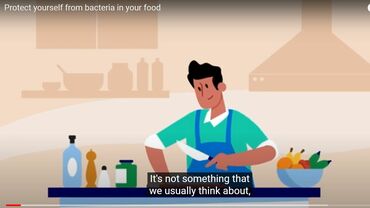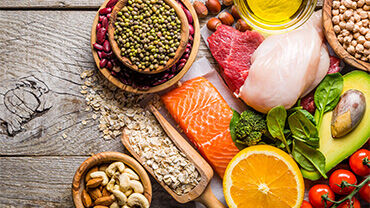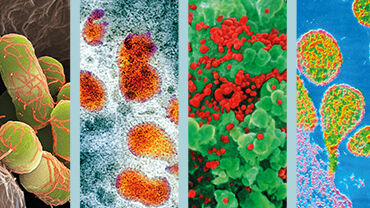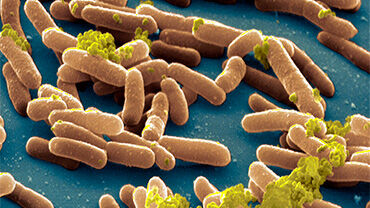Increase in severe food-borne infections reported in EU/EEA in 2022
The food-borne infections listeriosis and shigatoxigenic Escherichia coli are increasing in the EU/EEA and were in 2022 at levels higher than before the COVID-19 pandemic. Both diseases can cause severe symptoms, where listeriosis can result in meningitis, sepsis or, in pregnant women, miscarriage, while STEC can cause kidney failure, often in affected children. No increase was observed for salmonellosis and campylobacteriosis which typically cause the highest number of cases of food- and waterborne diseases annually. The information is revealed in the Annual Epidemiological Reports 2022, of which seven chapters are published today by ECDC.
The reports cover diseases causing the highest number of food- and waterborne infections in the EU/EEA, namely campylobacteriosis, salmonellosis, yersiniosis, shigatoxigenic Escherichia coli infection (STEC), listeriosis, shigellosis and hepatitis A.
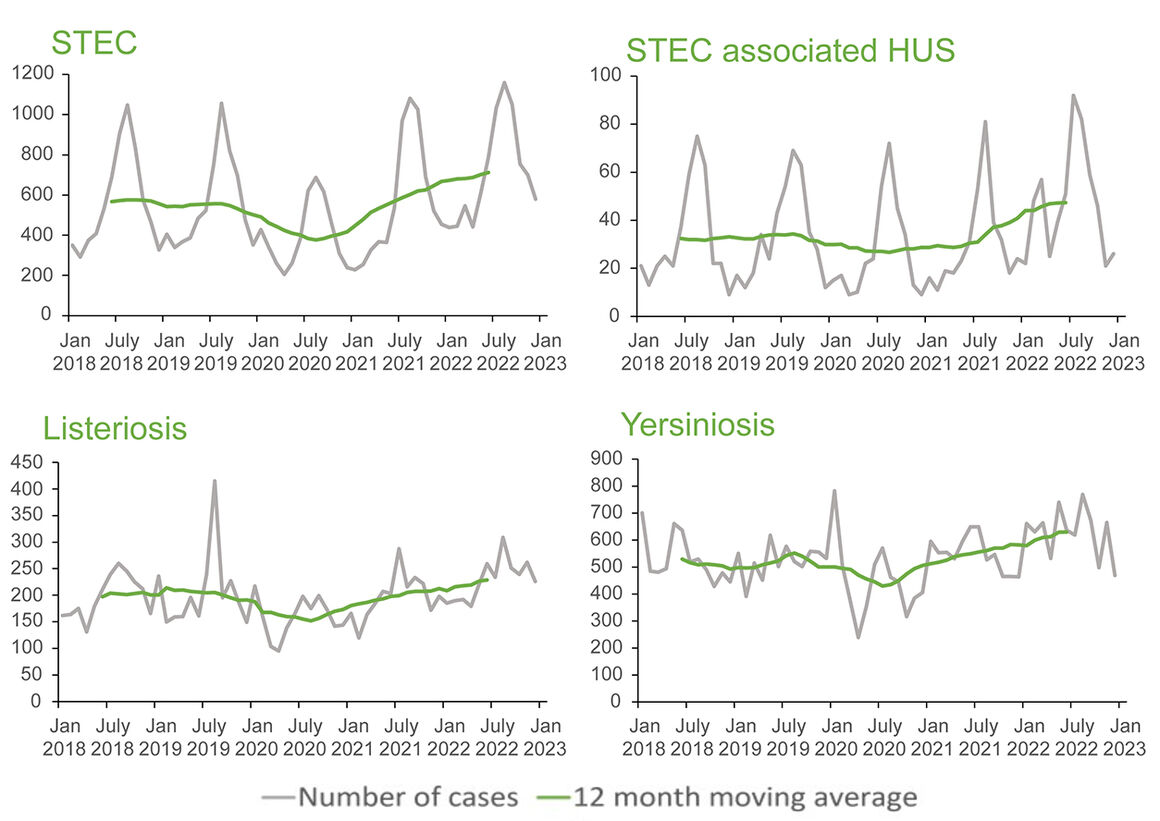
In the EU/EEA, the notification rates for listeriosis and yersiniosis in 2022 were the highest in over 10 years. A similar pattern was observed for STEC infections and STEC-associated haemolytic uremic syndrome (HUS) cases, where higher rates have only been reported in 2011 when a large multi-country STEC outbreak linked to fresh sprouts occurred in Europe. For listeriosis, one possible explanation for the increasing trend is the relative increase of the elderly population, who are at high risk of severe disease. Furthermore, it is important to consider that immuno-compromised people have increased susceptibility compared to healthy adults. The increase in STEC cases is partly due to a change in diagnostic methods to more sensitive genetic methods which are able to detect the bacteria easier, thus resulting in more cases being diagnosed.
In 2022, cases of extensively drug resistant Shigella strains were reported which were primarily related to gay, bisexual, and other men who have sex with men (gbMSM). This highlights the necessity for effective collaboration between clinical and public health competencies within the fields of sexually transmitted infections, antimicrobial resistance and food and waterborne diseases so that risk groups are informed. The largest shigellosis outbreak in 2022 was likely food borne and unlike the gbMSM associated outbreaks, the outbreak strain was not extensively drug resistant.
For campylobacteriosis, decreasing trends in macrolide resistance were observed in one third of reporting countries, particularly visible in Campylobacter coli. This is positive news as macrolides are becoming more important for treatment of severe foodborne infections in humans when fluoroquinolone resistance is increasing in both Salmonella and Campylobacter. A possible explanation of the decrease in macrolide resistance is the reduced use of this class of antimicrobials in veterinary medicine.
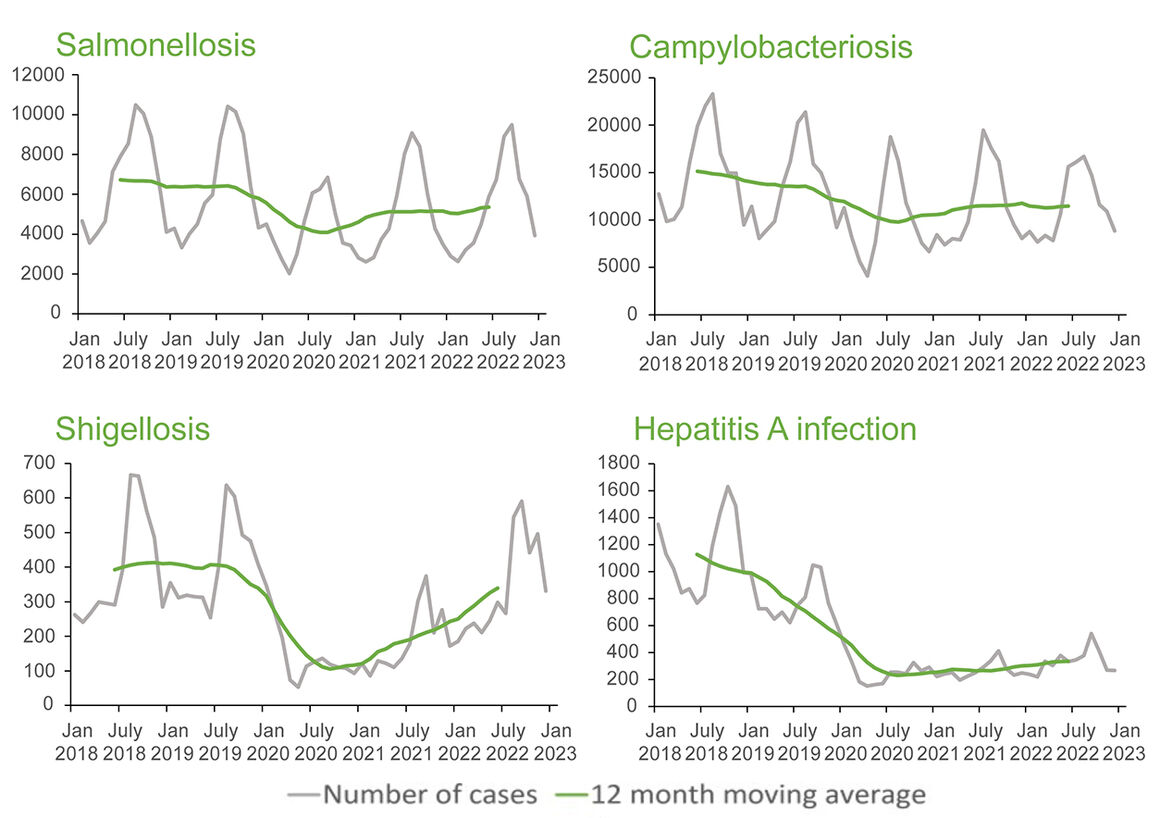
Salmonellosis, campylobacteriosis and shigellosis cases are still well below pre-pandemic numbers. A possible explanation might be a change in behaviour of people after the pandemic such as working from home, eating out less frequently and a decrease in travelling.
Also, a sharp decline in the number of hepatitis A cases is evident in the EU/EEA over the last five years. Factors contributing to this may include preventive measures such as practising good hand hygiene and increased vaccine uptake among at-risk groups, as well as the increased awareness of hepatitis A transmission. Increased natural immunity in at-risk groups following a large multi-country outbreak of hepatitis A mostly affecting men who have sex with men in 2016-2018 may also be a contributing factor.





